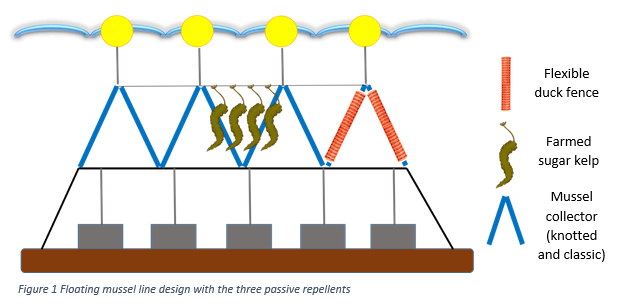CO-CULTURE AND COMBINATION OF PASSIVE DUCK REPELLENT TO REDUCE DIVING DUCK FORAGING ON BLUE MUSSELS Mytilus edulis FARMS
In Europe and Canada, the economic losses in blue mussels (Mytilus edulis) farms due to duck predation represent a major problem. Many deterrents tried in the past generally either focused on protecting mussels by isolating them in nets or cages, or on using active repelling techniques (sound, light, etc.). Those repellents are often expensive, stressful to duck population, only effective for a short period of time and do not take into consideration drifting ice.
The last type of diving duck repellent is classified as passive. Those repellents do not intend to induce stress in ducks, and generally work by hiding the mussels. To test if they can produce a synergistic protective effect on the mussel harvest, three passive deterrents - knotted rope, flexible duck fence and sugar kelp co-culture - have been used in different combinations for this study since summer 2019. The studied variables are the amount of mussel per linear meter, the biomass per linear meter (both mussel and kelp), the average mussel shell length at the end of spring 2020, as well as duck’s behavioral response observed during duck migration in spring 2020.
